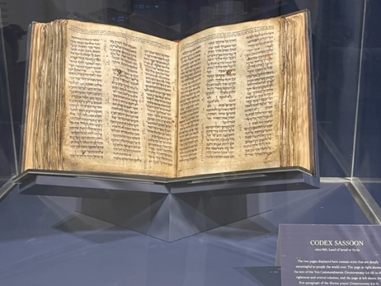The Tikun Leyl Shavuot all-night Torah study is a mainstay of Shavuot programming.
Why?
On one level, it is intuitive to maximize and optimize the amount of Torah we study on the holiday which commemorates our receiving the Torah in the first place. But why stay up all night? We find two sources in rabbinic literature for the practice. Staying up all night on Shavuot can be a virtue or, on the other hand, it may be to repair a mistake our ancestors made 3,335 years ago.
The Zohar (Emor 35) states:
“The ancient pious ones would not sleep on that night but would study the Torah and say “Let us come take possession of the inheritance holy to us and our children….” That night, the Congregation of Yisrael is adorned, and comes to couple with the King…. R. Shimon said thus when fellows gathered with him that night: “Let us come to affix [le-takna] the jewels of the bride so that tomorrow she will be found in her jewels and her adornments for the King, as is fitting.”
Staying up all night is the natural reaction to the enthusiasm we feel towards Torah. The “tikun” is a proactive enhancement showing our love of Torah.
Alternatively, the Midrash (Shir HaShirim Rabbah 1:12) recounts:
“Israel slept all that night because sleep on Shavuot is sweet and the night is short…God came and found them asleep. He began to approach them with noises. That is what is written ‘And it was on the third day when it was morning and there were sounds and lightning’ (Shemot 19:16)…Rav Yitzchak said: This is what they are criticized for by Yeshaya (50:2)), as it is said, ‘Why did I come and there is no man, I called and there is no response…’”
The “tikun” is a correction, a repair for our ancestors’ drowsiness. (Alas, we also find a precedent for those who sleep during the rabbi’s sermon…)
Shavuot is as good a time as any to recognize “eilu v’eilu divrei Elokim chaim – both views represent the words of the Living God.” Like many Jewish practices, a variety of sources are part of the greatness and complexity of Torah and Judaism.
With regards to Tikun Leyl Shavuot, it is less about whether one stays up all night, half the night, or goes to sleep early. On Shavuot, what matters is we embrace the opportunity to study Torah.
Maybe we regularly study all year long. On Shavuot, study a little more. Add a little tikkun, an extra adornment, to that learning. Try a new book or topic; explore a tough question; try and understand a different perspective. Maybe we’re less regular in our Torah study year-round. On Shavuot, make a tikun, correct that, and be sure to study. Attend one of the classes offered, read a Dvar Torah sheet, explore something on your own.
There is a halakhic definition of a Jew: one who is born to a Jewish mother or converts to Judaism. There are other “definitions” that, while not technical, capture the essence of being Jewish. For example, “one is Jewish if one’s grandchildren are Jewish.” It’s not enough to be a Jew. One needs to ensure Judaism passes into the future. I think a Jew is someone who seeks to grow – grow in knowledge, grow in spirit, grow in kindness. Shavuot is the holiday of Jewish growth. The tikun is our chance to fuel our minds and souls with Torah, the source.
Rabbi Jonathan Sacks noted:
“I am a Jew because I cherish the Torah, knowing that God is to be found not in natural forces but in moral meanings, in words, texts, teachings and commands, and because Jews, though they lacked all else, never ceased to value education as a sacred task, endowing the individual with dignity and depth.”
This Shavuot, we should ask ourselves questions like: Why am I a Jew? What do I find in Torah study? Am I putting in the time and effort to expand my horizons?
Answering these questions while learning some Torah may be an all-night endeavor for some. For all of us, Shavuot provides an opportunity for tikun, for studying some Torah, exploring the foundations of faith, and committing to being Jewish by growing in all the ways that we can.
Don’t forget the cheesecake…



